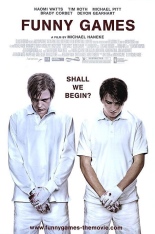
 I can understand why so many of the so few who saw Funny Games hated it. That means it made its point.
I can understand why so many of the so few who saw Funny Games hated it. That means it made its point.
A shot-for-shot remake of his Austrian film a decade prior, writer/director Michael Haneke (Caché) serves up a brilliant deconstruction of the family-in-peril scenario we’ve seen time and time again. The difference here is that Haneke approaches it from a (mostly) realistic angle rather than a cinematic one: You’re going to get what you expected to see — violence — but not necessarily delivered the way you want it.
But you’ll get it nonetheless, and Haneke will rub your nose in the mess and, adding insult to injury, blast some ungodly John Zorn noise on the soundtrack.
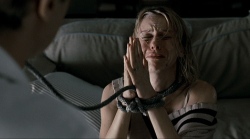 Naomi Watts (Mulholland Dr.) and Tim Roth (Reservoir Dogs) make up the well-to-do married couple whose coastal vacation home is invaded by the well-scrubbed psychopaths Paul (Michael Pitt, TV’s Boardwalk Empire) and Peter (Brady Corbet, Melancholia) posing as rich kids in tennis sweaters. The two break his kneecap, tie her up half-naked, and bet that they and their son (Devon Gearhart, Shorts) will be dead by morning. Let the Games begin!
Naomi Watts (Mulholland Dr.) and Tim Roth (Reservoir Dogs) make up the well-to-do married couple whose coastal vacation home is invaded by the well-scrubbed psychopaths Paul (Michael Pitt, TV’s Boardwalk Empire) and Peter (Brady Corbet, Melancholia) posing as rich kids in tennis sweaters. The two break his kneecap, tie her up half-naked, and bet that they and their son (Devon Gearhart, Shorts) will be dead by morning. Let the Games begin!
Paul and Peter draw out their twisted little plan to where the family is agonized by the mere dread of the inevitable — and viewers by their lack of patience. When very bad things do happen, Haneke generally doesn’t let his camera catch them, so audiences decrying Funny Games for crossing a line leads me to believe that we have become a nation of pussies. It’s a challenging watch, sure, but one that is crafted with a clinical detachment, is acted splendidly (especially by Watts) and sticks with you. If you hate Paul and Peter so much — and you will — that you want to punch the screen, don’t blame the movie for doing its job. —Rod Lott


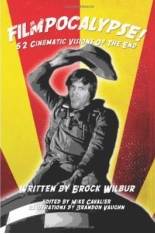
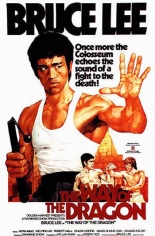
 Directed and “scriped” by its star Bruce Lee,
Directed and “scriped” by its star Bruce Lee, 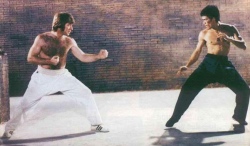 Eventually, the big boss gets wise and hires an American karate expert named Colt to take Tang out. Colt is played by a very hairy and paunchy Chuck Norris, who — let’s face it — was destined to play guys named Colt. He and Lee spar like lightning in the Colisseum, which is really something to see. After
Eventually, the big boss gets wise and hires an American karate expert named Colt to take Tang out. Colt is played by a very hairy and paunchy Chuck Norris, who — let’s face it — was destined to play guys named Colt. He and Lee spar like lightning in the Colisseum, which is really something to see. After 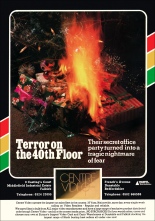
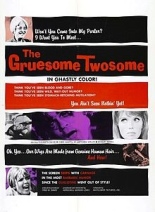
 Famously, Herschell Gordon Lewis’
Famously, Herschell Gordon Lewis’ 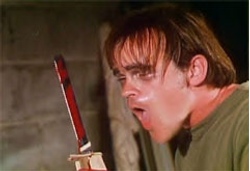 When she’s not hanging with her sorority sisters by dancing on the bed and eating buckets of KFC while dressed in nighties, curious Kathy (Gretchen Wells) tries to figure out what happened to the missing girls. Says one of her sisters, “Honestly, Kathy, don’t you ever concentrate on anything but mysteries?” That’s a kinder way of putting it than the phrasing of her blue-balled boyfriend (Rodney Bedell,
When she’s not hanging with her sorority sisters by dancing on the bed and eating buckets of KFC while dressed in nighties, curious Kathy (Gretchen Wells) tries to figure out what happened to the missing girls. Says one of her sisters, “Honestly, Kathy, don’t you ever concentrate on anything but mysteries?” That’s a kinder way of putting it than the phrasing of her blue-balled boyfriend (Rodney Bedell,